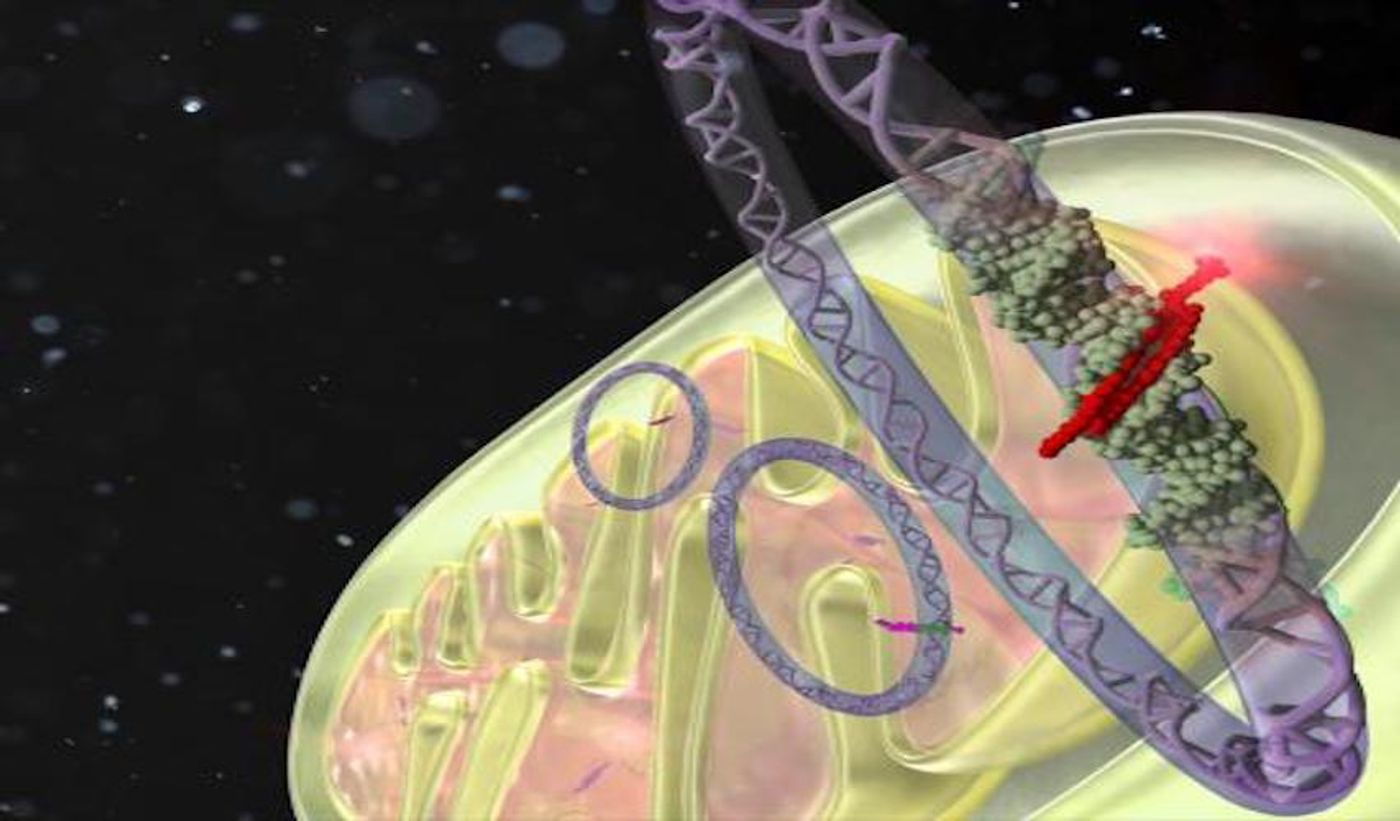Treatment for Mitochondrial Disease in Development
Mitochondria are special parts of the cell, crucial organelles that generate power. They are also the only organelles that carry a small amount of their DNA. Researchers have now demonstrated that it is possible for a synthetic molecule to bind to that DNA. That’s big news in the fight against mitochondrial diseases, which are caused by mutations in the DNA carried by the mitochondria.
Unique compounds called pyrrole-imidazole polyamides (PIPs) identify specific sequences of DNA in live cells, and they can silence genes that cause disease. To do this, they stop transcription factors, special proteins that affect gene expression, from binding to DNA. That, in turn, stops the expression of the diseased genes. However, while PIPs can get into the nucleus of a cell and bind to the nuclear DNA inside, they cannot cross the membrane of mitochondria.
Led by Ganesh Pandian Namasivayam at Kyoto University's Institute for Integrated Cell-Material Science (iCeMS), a research team has now been able to get PIPs across the mitochondrial membrane. Thus, they can now influence the transcription of mitochondrial DNA. They have reported their findings in the Journal of the American Chemical Society.
To enable the PIP to overcome the energy barrier of a mitochondrion, the scientists added an MPP - mitochondria-penetrating peptide. The new molecule, an MPP conjugated PIP or MITO-PIP, was engineered to block the binding site of TFAM, mitochondrial transcription factor A. TFAM is critical to the regulation of metabolism and energy synthesis in the mitochondria; it influences the expression of the ND6 gene, first author Takuya Hidaka explained.
The investigators determined that TFAM-inhibiting MITO-PIP was able to find a mitochondrial DNA sequence and reduce the expression of ND6 by 60 to 90 percent, depending on what concentration the scientists used. They tracked the MITO-PIPs into mitochondria, confirming they did not affect gene expression in the nucleus by using fluorescent labeling of the compound.
The ND6 gene has been linked to several mitochondrial diseases. They include Leber's hereditary optic neuropathy, in which affected patients lose central vision, dystonia, a disease of muscle movement, and Leber's hereditary optic neuropathy. As such, these mitochondrial diseases are prime targets for researchers aiming to improve the lives of patients through clinical tools. The investigators are continuing to work to that end. "We plan to develop an advanced version of MITO-PIPs that can identify and localize only inside diseased mitochondria," said Ganesh.
Currently, only symptom management is possible with mitochondrial disorders, and this could be a new, powerful way to treat these diseases.
"Our proof-of-concept study provides a fresh platform that opens new avenues for DNA-based functional ligands that are capable of altering the mitochondrial genome in a sequence-specific manner," concluded Hiroshi Sugiyama, the principal investigator.
In the video above, Namasivayam discusses his work.
Sources: AAAS/Eurekalert! Via Kyoto University News, Journal of the American Chemical Society










